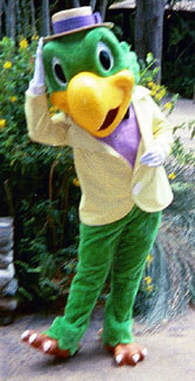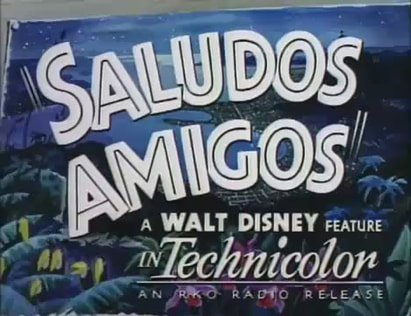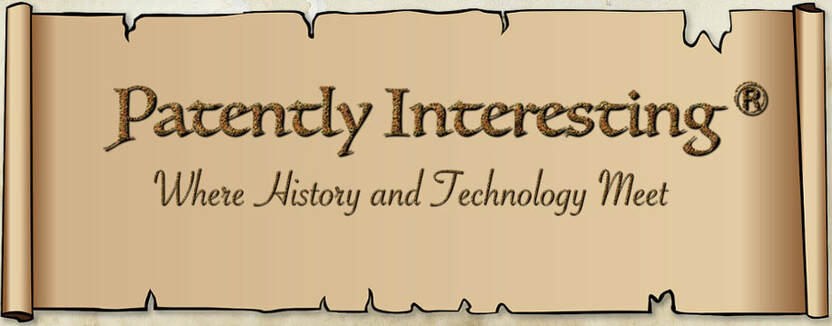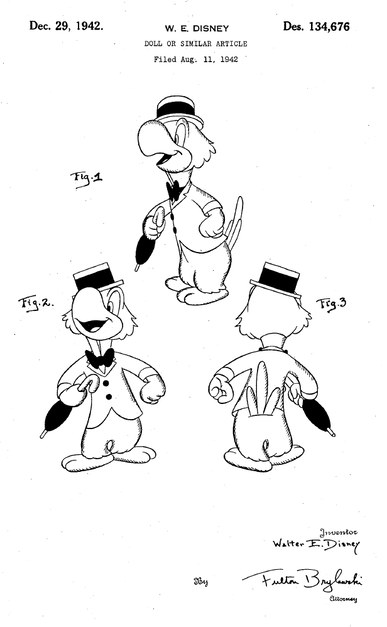 José at Walt Disney World
José at Walt Disney World
On December 29, 1942, U.S. Design Patent No.: 134,676 issued to Walter E. Disney. The design was for the animated character José Carioca, who was a Brazilian parrot. José appeared in printed comics and starred in three feature films: Saludos Amigos (1942), The Three Caballeros (1944) and Melody Time (1948). Later, he would appear in television shows, with DuckTales being the most recent, and have cameo roles in a number of films, including Who Framed Roger Rabbit.
José was created in 1941, while Walt was on a goodwill tour of South America sponsored by the Office of the Coordinator of Inter-American Affairs (OCIAA), which was tasked with implementing President Franklin Roosevelt's "Good Neighbor" policy. Under the direction of Nelson Rockefeller, the OCIAA worked to improve ties between the United States and South America to counter Nazi Germany's increasing influence in the region. Early on, the OCIAA had enlisted the help of Hollywood to change how the U.S. and Latin American societies viewed each other. In particular, the OCIAA wanted to abolish the negative stereotypes the two societies had of each other.
When first contacted by the OCIAA, Walt was initially reluctant to participate in the South American goodwill tour. He changed his mind, however, when the OCIAA redefined the purpose of the tour as being a trip for gathering material for films about South America. With this redefined purpose, Walt saw an opportunity to expand the market for his films, which had been reduced by the loss of a good portion of Europe and Asia due to World War II. The tour would also be a distraction from a bitter labor strike that had been brought against the Disney company by the Screen Cartoonists Guild (SCG). Unfortunately for Walt, his decision to go on the tour led to an unfavorable settlement of the strike. When the SCG threatened to disrupt the tour, arbitrators from the U.S. Labor Department quickly settled the strike in favor of the SCG to avoid bad publicity during the tour.
Walt, his wife, Lillian, and fifteen Disney staff members left for South America in mid-August of 1941. Soon after their arrival, the group split up to visit different countries, collecting music and folklore and sketching people, clothing, buildings, animals and landscapes. After traveling through South America for several weeks, Walt and his entourage returned to the U.S. and began work on the production of Saludos Amigos, using federal funds. In this regard, over 93 percent of Disney's production, at this time, was connected to government contracts.
José was created in 1941, while Walt was on a goodwill tour of South America sponsored by the Office of the Coordinator of Inter-American Affairs (OCIAA), which was tasked with implementing President Franklin Roosevelt's "Good Neighbor" policy. Under the direction of Nelson Rockefeller, the OCIAA worked to improve ties between the United States and South America to counter Nazi Germany's increasing influence in the region. Early on, the OCIAA had enlisted the help of Hollywood to change how the U.S. and Latin American societies viewed each other. In particular, the OCIAA wanted to abolish the negative stereotypes the two societies had of each other.
When first contacted by the OCIAA, Walt was initially reluctant to participate in the South American goodwill tour. He changed his mind, however, when the OCIAA redefined the purpose of the tour as being a trip for gathering material for films about South America. With this redefined purpose, Walt saw an opportunity to expand the market for his films, which had been reduced by the loss of a good portion of Europe and Asia due to World War II. The tour would also be a distraction from a bitter labor strike that had been brought against the Disney company by the Screen Cartoonists Guild (SCG). Unfortunately for Walt, his decision to go on the tour led to an unfavorable settlement of the strike. When the SCG threatened to disrupt the tour, arbitrators from the U.S. Labor Department quickly settled the strike in favor of the SCG to avoid bad publicity during the tour.
Walt, his wife, Lillian, and fifteen Disney staff members left for South America in mid-August of 1941. Soon after their arrival, the group split up to visit different countries, collecting music and folklore and sketching people, clothing, buildings, animals and landscapes. After traveling through South America for several weeks, Walt and his entourage returned to the U.S. and began work on the production of Saludos Amigos, using federal funds. In this regard, over 93 percent of Disney's production, at this time, was connected to government contracts.

The film Saludos Amigos featured José, as well as Donald Duck, Goofy and members of the Disney staff. It was the first of Disney's "package films" in which several animated shorts were grouped together to form a full-length feature movie. Saludos Amigos used live-action segments showing Disney staff touring South America to tie together four animated sections: "Lake Titicaca", which details Donald's travails with a stubborn llama; "Pedro", which tells the story of a small mail plane flying over the Andes; "El Gaucho Goofy", which depicts Goofy as a Gaucho on the Argentine Pampas; and "Aquarela do Brasil" in which José shows Donald the sights and sounds of Rio de Janiero. Saludos Amigos was a very short feature movie. Indeed, at a mere 43 minutes, Saludos Amigos is the shortest feature film ever released by Disney.
Saludos Amigos was followed two years later by the filmThe Three Caballeros, which was also a package film and was the last of Disney's Good Neighbor films. In The Three Caballero, Donald Duck receives a large gift-wrapped package on his birthday. The package includes three gifts, which take him on different adventures. The first gift is a movie projector that shows a film about South American birds; the second gift is a large pop-up book about Brazil, from which José bursts forth to take Donald on a frenetic, music-filled adventure in Brazil; and the third gift is a piñata, accompanied by Panchito, a Mexican rooster. Panchito, José and Donald take a ride on a magic serape to visit Veracruz, Acapulco and Mexico City.
At the time of its release, Saludos Amigos generally received favorable critical reviews, mainly because it was recognized as fulfilling its purpose of being a soft propaganda film. The Three Caballeros, however, was almost universally panned by critics because of its frenetic experimentalism and overt sexuality, mainly on account of Donald lusting after real women in bathing suits. While better received than its successor, Saludos Amigos is generally regarded as marking the end of Disney's Golden Age and the beginning of its artistic decline. Many believe that the bitter labor strike by the SCG was the impetus for this decline. The strike left Walt deeply disillusioned and caused him to lose much of his optimism and adventurism. After the strike, Walt ran the Disney company in a much more business-like manner, with less fun and exuberance.
Saludos Amigos was followed two years later by the filmThe Three Caballeros, which was also a package film and was the last of Disney's Good Neighbor films. In The Three Caballero, Donald Duck receives a large gift-wrapped package on his birthday. The package includes three gifts, which take him on different adventures. The first gift is a movie projector that shows a film about South American birds; the second gift is a large pop-up book about Brazil, from which José bursts forth to take Donald on a frenetic, music-filled adventure in Brazil; and the third gift is a piñata, accompanied by Panchito, a Mexican rooster. Panchito, José and Donald take a ride on a magic serape to visit Veracruz, Acapulco and Mexico City.
At the time of its release, Saludos Amigos generally received favorable critical reviews, mainly because it was recognized as fulfilling its purpose of being a soft propaganda film. The Three Caballeros, however, was almost universally panned by critics because of its frenetic experimentalism and overt sexuality, mainly on account of Donald lusting after real women in bathing suits. While better received than its successor, Saludos Amigos is generally regarded as marking the end of Disney's Golden Age and the beginning of its artistic decline. Many believe that the bitter labor strike by the SCG was the impetus for this decline. The strike left Walt deeply disillusioned and caused him to lose much of his optimism and adventurism. After the strike, Walt ran the Disney company in a much more business-like manner, with less fun and exuberance.


